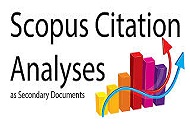Penggunaan Collocation dalam Meningkatkan Kemampuan Keluasan Kosakata (Vocabulary Breadth) Bahasa Inggris Mahasiswa Pariwisata di AKPAR Mataram
DOI:
https://doi.org/10.33394/jk.v3i2.569Keywords:
Collocation, Vocabulary, LanguageAbstract
References
Becker, W.C. (1977) ‘ Teaching reading and language to the disadvantaged – what we have learned from field research.’ Harvard Educational Review, 47: 518-543.
Benson, M. 1985 in Ilson (ed.). 'Collocations and idioms'.
Firth, J. R. (1968) Selected Papers of.f R. Firth 1952-1959. Edited by F. R. Palmer.Bloomington: Indiana University Press
Graves, M.F. (1986). Vocabulary learning and instruction. In E.Z. Rothkopf (Ed.), Review of Research in Education, 13, 49-89.
Harmer, J. (2001). The Practice of English Language Teaching. Third Edition. London Longman. PP: 246- 267.
Kennedy, G. (2003). Amplifier Collocations in the British National Corpus: Implications for English Language Teaching. Tesol Quarretly 37/3,
Kridalaksana, Harimurti. 1982. Pembentukan Kata dalam Bahasa Indonesia
Lewis, M. (2000). Teaching Collocation. Further Developments in the LexicalApproach. Heinle, Cengage Learning.
McCarthy, M. J. and O’Dell, F. (2005). English Collacations in Use. Cambridge: Cambridge University Press.
Nattinger, J. R. (1988). Some current trends in vocabulary teaching. In R. Carter & M. McCarty (Eds.). Vocabulary and language teaching (1st ed., pp. 62-82). New York: Longman.
Robbins, C. & Ehri, L. (1994). Reading storybooks to kindergarten helps them learn new vocabulary words. Journal of Educational Psychology, 86(1), pp. 54-64.
Schlosser, R. W. (2003). The efficacy of augmentative and alternative communication: Toward evidence-based practice (1st ed.). San Diego, CA: Academic Press.
Shin, D., Nation, P. (2008). Beyond Simple Words: The most frequent collocations in spoken English. ELT Journal. 62/4. 339-48.
Downloads
Published
How to Cite
Issue
Section
Citation Check
License
License and Publishing AgreementIn submitting the manuscript to the journal, the authors certify that:
- They are authorized by their co-authors to enter into these arrangements.
- The work described has not been formally published before, except in the form of an abstract or as part of a published lecture, review, thesis, or overlay journal.
- That it is not under consideration for publication elsewhere,
- That its publication has been approved by all the author(s) and by the responsible authorities – tacitly or explicitly – of the institutes where the work has been carried out.
- They secure the right to reproduce any material that has already been published or copyrighted elsewhere.
- They agree to the following license and publishing agreement.
Authors who publish with JK agree to the following terms:
- Authors retain copyright and grant the journal right of first publication with the work simultaneously licensed under a Creative Commons Attribution License (CC BY-SA 4.0) that allows others to share the work with an acknowledgment of the work's authorship and initial publication in this journal.Â
- Authors are able to enter into separate, additional contractual arrangements for the non-exclusive distribution of the journal's published version of the work (e.g., post it to an institutional repository or publish it in a book), with an acknowledgment of its initial publication in this journal.
- Authors are permitted and encouraged to post their work online (e.g., in institutional repositories or on their website) prior to and during the submission process, as it can lead to productive exchanges, as well as earlier and greater citation of published work.
- Open Data Commons Attribution License, http://www.opendatacommons.org/licenses/by/1.0/ (default)

This work is licensed under a Creative Commons Attribution-ShareAlike 4.0 International License.








